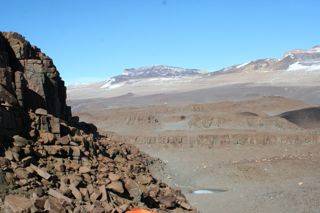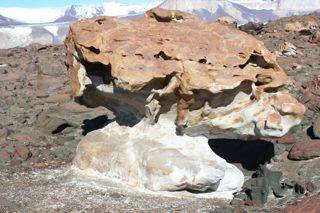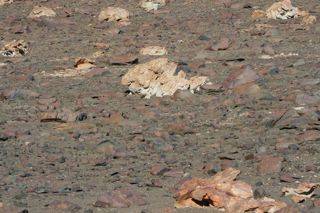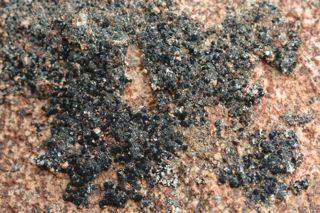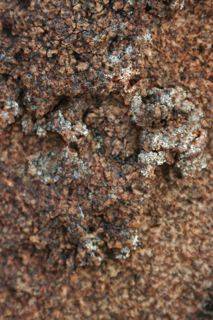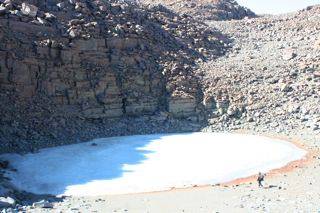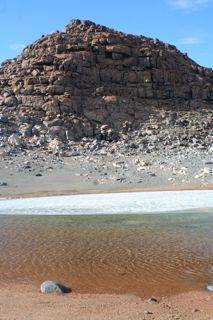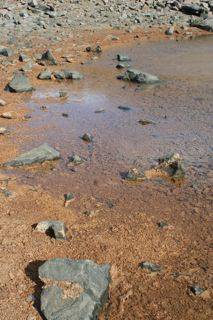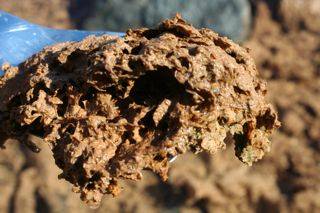The Wright Valley is one of the ice-free Dry Valleys. The Upper Wright valley is characterised by the so-called Labyrinth, which is an area of steep-sided canyons and channels. It is mainly dolerite and most rocks are bright red. Based on the literature it was formed by large 'floods during the mid-Miocene era'.
The Labyrinth
In the area you can find many strangely shaped rocks. They are called ventifacts, and are wind- and dirt-sculpted rocks.
Ventifacts in the Labyrinth
Wherever you look you only see rocks and it often reminded me of images showing how it may look on Mars.
Landscapes like on Mars
However, there is life. On one of our walks, we found these lichens. They were on the top of one of the ridges, where the overall humidity seems to be higher due to its location at a height of greater than 750 metres, and the greater influence of clouds and fog. Many of the lichens grow under or in cracks of the rocks, and this enhances the erosion of the rocks.
Lichens on rocks in the Labyrinth
AND, as soon as you get running water and temporary ponds you get thick accumulations of orange-pigmented mats. To date there have only been few morphological descriptions and there is no DNA-based data available at all.
Meltwater ponds covered by ice with bright orange mats
Orange cyanobacterial-based microbial mats
Close-up of microbial mat



